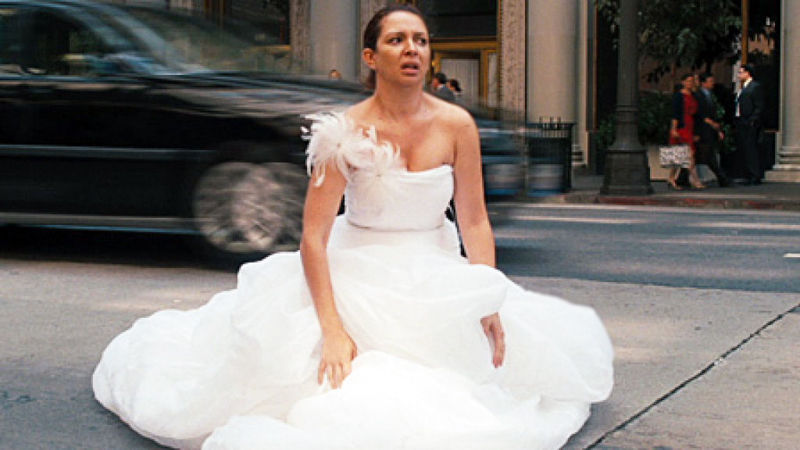In recent years, there has been a notable rise in the number of women-who-seem-like-they-probably-fart in our pop culture diet.
But the problem is far from solved. Of 120 popular films released between January 2010 and May 2013, only 31 percent of speaking or named characters were female, according to a 2014 report by the Geena Davis Institute on Gender in Media. And only 23 percent of lead actors in those films were female. Women actors were also twice as likely to be thin, naked or partially naked and to be shown in sexually revealing clothing.
And a depressing number of films still fail the “Bechdel Test,” wherein two named female characters have to talk to each other about something other than men.
There is—mother knows—a lot of work left to do. But we are moving in the right direction.
First, there was Bridesmaids in 2011. From Maya Rudolph taking a dump in the middle of a street to Kristen Wiig succeeding, despite a chocolate fountain fight and overall terrible behavior on her part, this movie had it all. For the first time ever, I felt like I was watching people I actually knew and friendships I actually understood.
The movie managed to be universally funny, while being even funnier for women because we have all been there. Yes, we’ve felt overshadowed by an obnoxiously perfect friend of a friend. Yes, we’ve felt like we were about to pass out while trussed up in a ridiculous dress. Yes, we’ve felt completely nonplussed at some guy’s overconfidence in his ability to turn us on. Yes, yes, yes.
And it’s only gotten better since. This year alone, Shailene Woodley stepped right over “artfully mussed” and had a truly bad hair day in a prison scene in Insurgent. Melissa McCarthy broke about a zillion barriers in one film as the smart, crass desk jockey turned spy in the bluntly named, Spy. Women have even stepped into their own in the field of blockbuster action movies with the critically acclaimed Mad Max: Fury Road, which I didn’t understand at all, but hey, there was an aged female biker gang, so I’m not complaining.
Then there’s the broader pop cultural sweep: Julianna Margulies is playing one of the most multi-dimensional female characters ever to lead a TV series in The Good Wife. Her picture perfect looks as the lawyer Alicia Florrick aren’t anything new, but her ambition, sexuality and complicated feelings about motherhood are a breath of fresh air for female viewers.
Taylor Swift is making millions on some of the funniest music videos I’ve seen. She dances awkwardly in “Shake It Off,” leads a band of people dressed as dogs (what?) in “We Are Never Ever Getting Back Together” and tries out every single action hero trope there is in “Bad Blood.”
And a new generation of men are helping the transition right along, from Andy Grammer singing about politely turning down a woman’s advances in favor of going home to his wife to Jimmy Fallon treating his female guests like, umm, people.
So maybe it shouldn’t have been as surprising as it was when the Women’s World Cup final game became not only the most-watched soccer game ever broadcast on an English-language news station in America, but also one of the top sporting events of the year, beating the World Series final and the NBA final, with 25.4 million viewers.
An apparently baffled New York Times reporter tried to get to the bottom of the numbers, citing things like “group viewing” and “good time of day,” while completely leaving out what seems an obvious point to me: Women were watching. We were watching people who look like us, who run and jump and stumble and spit and (I’m guessing) fart. It was glorious.
Because all we really want out of our entertainment, all anyone really wants, is to see ourselves reflected in it, to feel like enough of the in-crowd to get a fair shake on the big screen. It’s taken a long time for women to get even this far. For people of color, we are not even this far. There is a long way to go. But for the first time in my life, it feels like we’re getting there.


